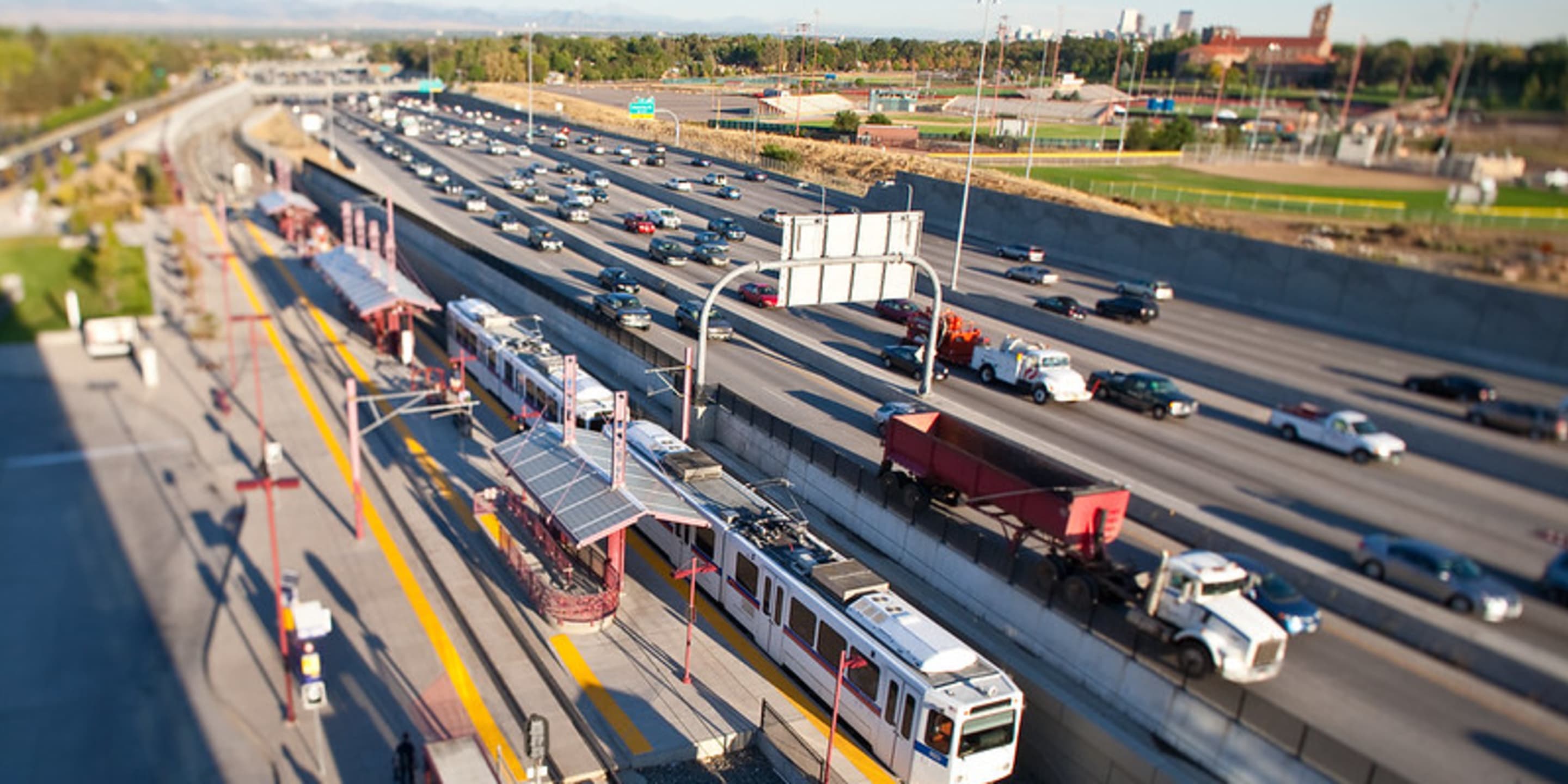
RTD’s on-time performance for light rail exceeds 90% in less than a year
Rail maintenance completion and focused hiring efforts contributed to a 30-point increase in light rail service reliability
DENVER (Sept. 29, 2025) –– The Regional Transportation District (RTD)'s on-time performance for light rail service exceeded 90% in July 2025, as compared with 59.9% in August 2024. Completing both the Coping Panels Project and first phase of the Downtown Rail Reconstruction Project, along with expedited operator hiring, positively affected service reliability for light rail customers.
“Having asked our customers for patience and understanding while these critical light rail infrastructure projects were underway, it is incredibly gratifying to now see such a substantial improvement in on-time performance,” said General Manager and CEO Debra A. Johnson. “RTD is committed to providing reliable service, and the schedule we keep amplifies that pledge to our customers. The team takes this charge seriously and approaches every aspect of our transit service delivery with this top of mind.”
On-time performance is a measurement of how frequently buses and trains arrive at stop or stations according to the posted schedule, with “on-time” being defined as a vehicle arriving no more than one minute early or five minutes late. On-time performance can be impacted by several factors, including maintenance work, inclement weather, mechanical issues, accidents, customer boarding times and traffic conditions relating to agency bus service. The results of RTD’s 2025 Customer Excellence Survey reflect the agency’s commitment to reliability, with year-over-year improvements in customers noting that bus or train services usually run on time.
In addition, light rail service availability averaged 96.8% through August 2025, reflecting the fact that RTD delivered 21,160 light rail trips out of the 21,848 scheduled. Year-to-date service availability for bus is 99.5% and nearly 99% across all commuter rail lines. Service availability is a measurement of the percentage of trips that operate as scheduled.
An emphasis on hiring operators
Since 2023, RTD has focused on recruiting frontline positions, such as light rail operators, through streamlining the hiring processes and increasing awareness about career opportunities. The effort has enabled the agency to improve service availability and meet the mobility needs of customers. RTD has increased the overall level of service with more buses and trains running, longer hours of operation, and more frequent service compared with 2024, all improvements that were the result of hiring frontline positions. With an additional 25 light rail operators budgeted in 2025, RTD has a 14% overall operator vacancy rate year-to-date compared with 18% in 2024.
The Talent Acquisition team has undertaken 18 events so far in 2025 to hire candidates, with 30 total events planned to help fill open roles. RTD’s Talent Acquisition team also has made a concerted effort to target job boards and LinkedIn to increase awareness of open positions. The agency has grown its Talent Acquisition team from seven employees in 2022 to 11 today – five of whom are dedicated to hiring roles in bus and rail operations. On average, RTD has at least 20 trainees engaged in light rail operator training at any given time.
Optimizing connections
To further enhance on-time performance during this year’s Downtown Rail Reconstruction Project, RTD preemptively analyzed various scenarios for delivering light rail services ahead of the work commencing near Kalamath Street. Rerouting the D Line to Denver Union Station was determined to provide the most reliable on-time service for customers of the several scenarios evaluated.
Throughout the Downtown Rail Reconstruction Project’s duration, which runs through Nov. 27, the E and H lines will maintain 15-minute frequencies. RTD coordinated E and H light rail schedules to enable customers to make efficient cross-platform transfers from the H Line to the E Line, with minimal wait time for continued travel beyond Southmoor Station.
Back to Basics
Over the last 18 months, RTD has been addressing several rail maintenance projects as part of the agency’s Back to Basics initiative. The initiative is focused on protecting the long-term integrity of the rail network and ensuring previous investments remain intact in the future.
Beginning in May 2024, RTD implemented more rigorous light rail inspections, using American Public Transportation Association (APTA) guidelines for periodic inspection and maintenance. This change resulted in implementation of temporary speed restrictions in June 2024 along the E, H, and R lines. Subsequent slow zones were implemented in July 2024 on the R, H, and D lines. The work ultimately spanned four slow zones and, to minimize customer disruptions, entailed the largest overnight rail replacement program RTD had undertaken in its history. Between June 2024 to May 2025, RTD crews fully removed and replaced 12,091 feet, or more than two miles, of track.
The second phase of the multi-year Coping Panels Project also required temporary speed restrictions for the E, H and R lines and single-tracking operations. The project’s second and final year kicked off May 26, 2024, and concluded Aug. 23, 2024, returning the light rail lines to regularly scheduled operations.
Copper wire thefts near track signals, switches and rail crossings periodically hindered on-time performance in 2024. Thefts temporarily disrupted rail services as the agency replaced the stolen wire. RTD implemented infrastructure mitigations to deter thefts, and the agency launched its internal detective bureau in January 2025 to enable Transit Police officers to pursue criminal activity across the district, including copper wire thefts.
Ridership
Between January and July 2025, RTD had a total system ridership of approximately 36.7 million boardings. Of these, more than 6.1 million were on light rail. Since June 2025, RTD has seen an uptick in light rail boardings, which surpassed the light rail ridership in both June and July 2024 in a year-over-year comparison.